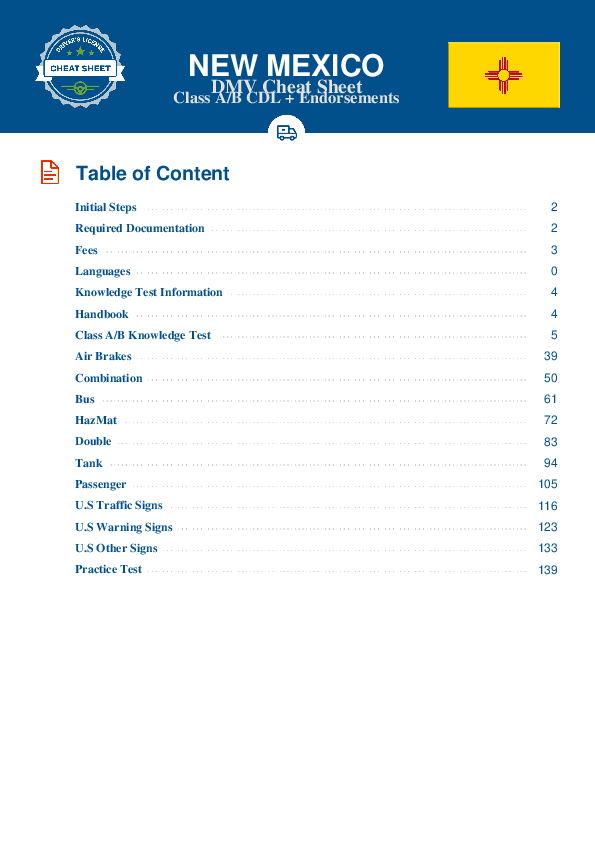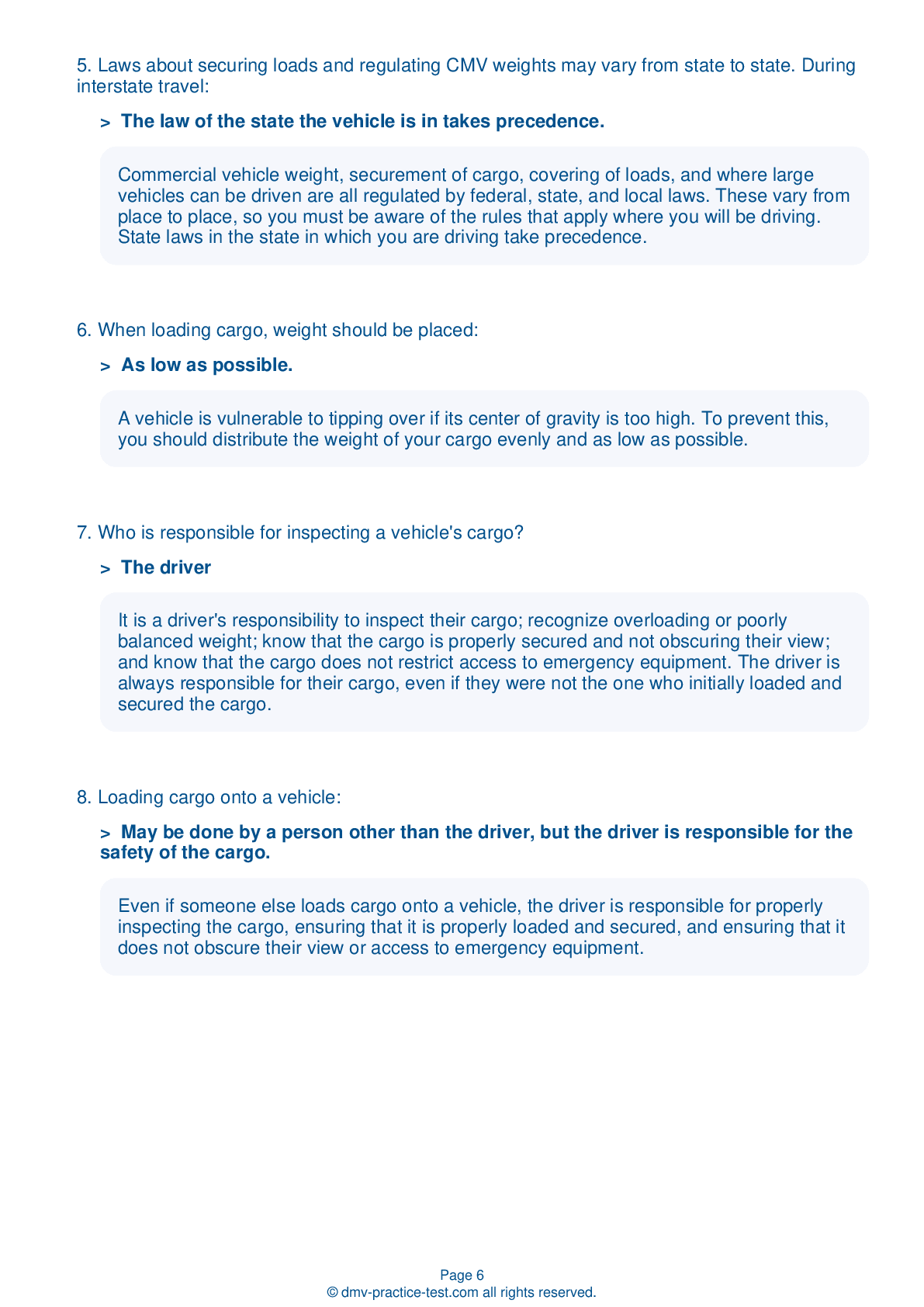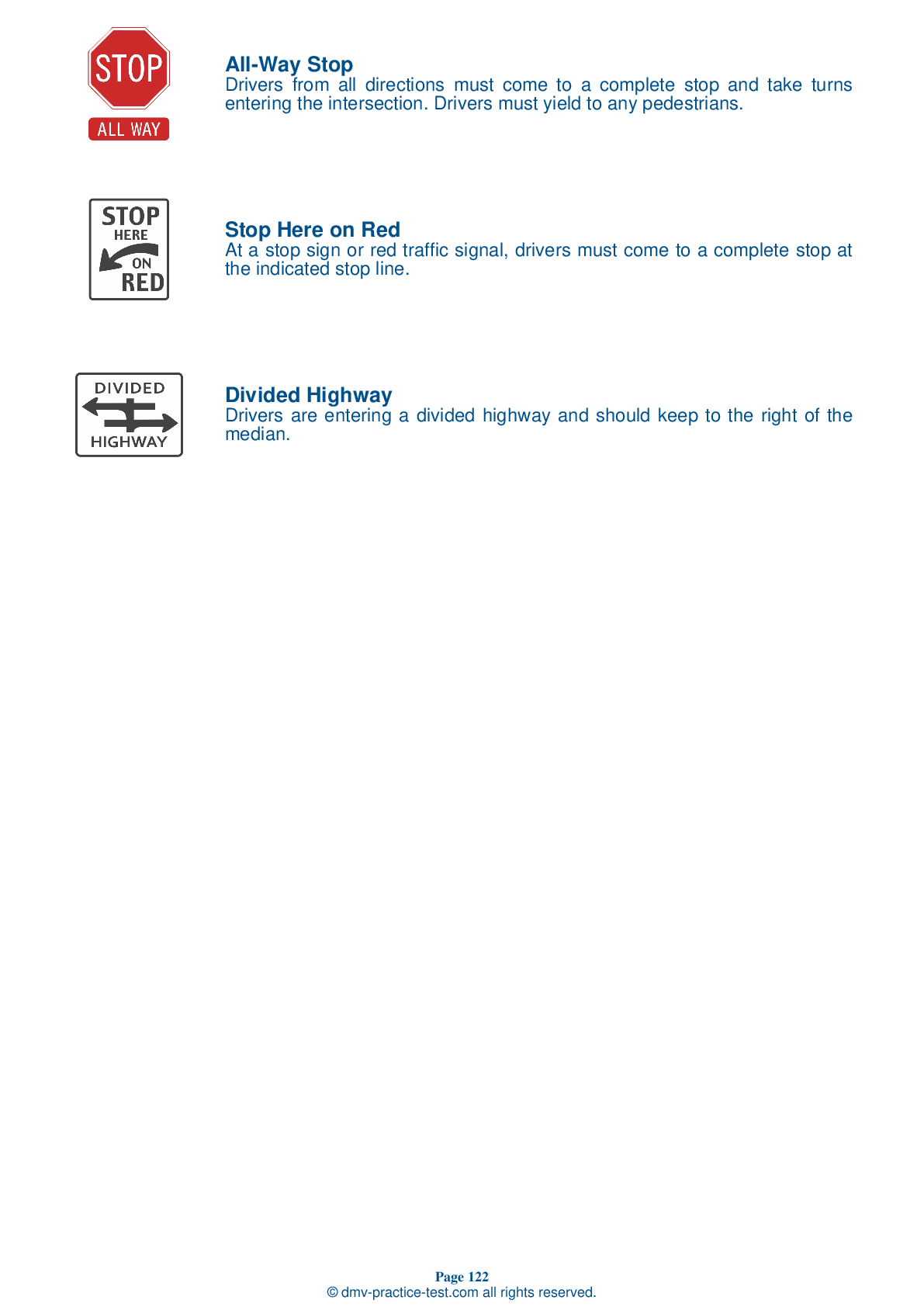Combination #1
Combination Vehicles Practice Test | New Mexico 2025 #1
Train for FREE online with our New Mexico CDL combination vehicle test. The official exam test consists of several obligatory parts, with all of them checking your knowledge of different blocks of road rules. If you need to obtain a NM combination license in 2025, practice as much as possible. Free sample tests published on our website will help you check and improve your knowledge and boost your grades. Please bear in mind that DMV requirements for issuing a combination license may vary from state to state.
20
16
20
1 . What is a bobtail tractor?
Tractors without semi-trailers are referred to as "bobtail tractors." Bobtail tractors are difficult to operate and drivers must exercise caution.
2 . If the emergency air line loses pressure:
The emergency air line controls the emergency brakes on a combination vehicle. A loss of air pressure in the emergency line will cause the emergency trailer brakes to activate.
3 . What does an Anti-Lock Braking System (ABS) do?
An Anti-Lock Braking System (ABS) helps prevent wheel lockup during hard braking. If ABS detects impending lockup, it reduces braking pressure to a safe level.
4 . When driving while pulling trailers, you should:
You should always steer gently and smoothly while pulling a trailer. Making sudden steering moves could cause the trailer to tip over.
5 . When braking while pulling a trailer equipped with anti-lock brakes, you should:
When driving a tractor-trailer combination that is equipped with an Anti-Lock Braking System (ABS), you should brake in the same manner that you would if the vehicle was not equipped with ABS.
6 . The trailer hand valve should be used:
The trailer hand valve (also referred to as the "trolley valve" or "Johnson bar") works the trailer brakes and should be used only when testing them. Using the trailer hand valve while driving could result in a skid.
7 . Combination vehicles:
Driving combination vehicles requires more skill than driving single commercial vehicles. Combinations are generally longer, generally heavier, and are more vulnerable to rollover.
2025 New Mexico | Frequently Asked Questions
To acquire a CDL Passenger endorsement in New Mexico, you must first possess a valid New Mexico CDL. Then, pass the Passenger Transport Test, which covers the special rules and skills necessary for safely transporting passengers. You may also need to pass a skills test in a vehicle similar to the one you'll be driving.
To obtain a CDL Passenger license, you must have a valid CDL and be at least 21 years old. You'll need to pass the Passenger Transport written test, which covers topics like vehicle inspection, loading/unloading passengers, and emergency procedures. In some cases, a skills test in a passenger vehicle may also be required.
While New Mexico doesn't mandate specific training for a CDL Passenger endorsement, it's highly recommended. Training can help you prepare for the Passenger Transport Test and any required skills tests. Experience driving similar vehicles can also be beneficial. However, the key requirement is passing the relevant written and skills tests.
Yes, to secure a CDL Passenger endorsement in New Mexico, you'll need to pass the Passenger Vehicles endorsement written test. This test covers topics such as vehicle inspection, loading/unloading procedures, managing passengers, and emergency situations. It's designed to ensure you have the necessary knowledge to safely operate a passenger vehicle.
During the CDL Passenger endorsement assessment, you'll need to showcase skills such as pre-trip vehicle inspection, safe driving practices, proper use of mirrors, executing turns and stops smoothly, and emergency procedures. You'll also need to demonstrate understanding of special rules for buses, including loading/unloading passengers safely and securing wheelchair lifts.
No, you cannot legally transport passengers without a valid CDL Passenger endorsement in New Mexico. This endorsement is required by law for drivers who wish to operate a commercial vehicle designed to carry 16 or more passengers, including the driver. Driving without the necessary endorsement can lead to severe penalties.
Yes, you can add the CDL Passenger endorsement to your existing commercial driver's license. You don't need a new application. However, you must pass the Passenger Vehicles endorsement written test and a skills test in a passenger vehicle. It's recommended to check with the New Mexico Motor Vehicle Division for specific procedures and requirements.
Yes, there are specific restrictions for drivers with a CDL Passenger endorsement in New Mexico. Drivers are required to obey all standard traffic laws and additionally, they must not tow trailers. They're also responsible for the safety of passengers, ensuring seat belt use, and managing conduct. Overloading or operating the vehicle in a reckless or negligent manner is strictly prohibited.
Yes, there are age-related prerequisites for acquiring the CDL Passenger endorsement in New Mexico. Applicants must be at least 21 years old to drive a commercial vehicle across state lines or carry hazardous materials. However, those who are 18 years or older can obtain a CDL for in-state driving (intrastate) only.
With a CDL Passenger endorsement in New Mexico, you'll be authorized to operate a range of passenger vehicles. These include buses, shuttle vans, and other vehicles designed to carry 16 or more passengers, including the driver. This endorsement is crucial for jobs like city bus drivers, school bus drivers, and commercial bus drivers.



